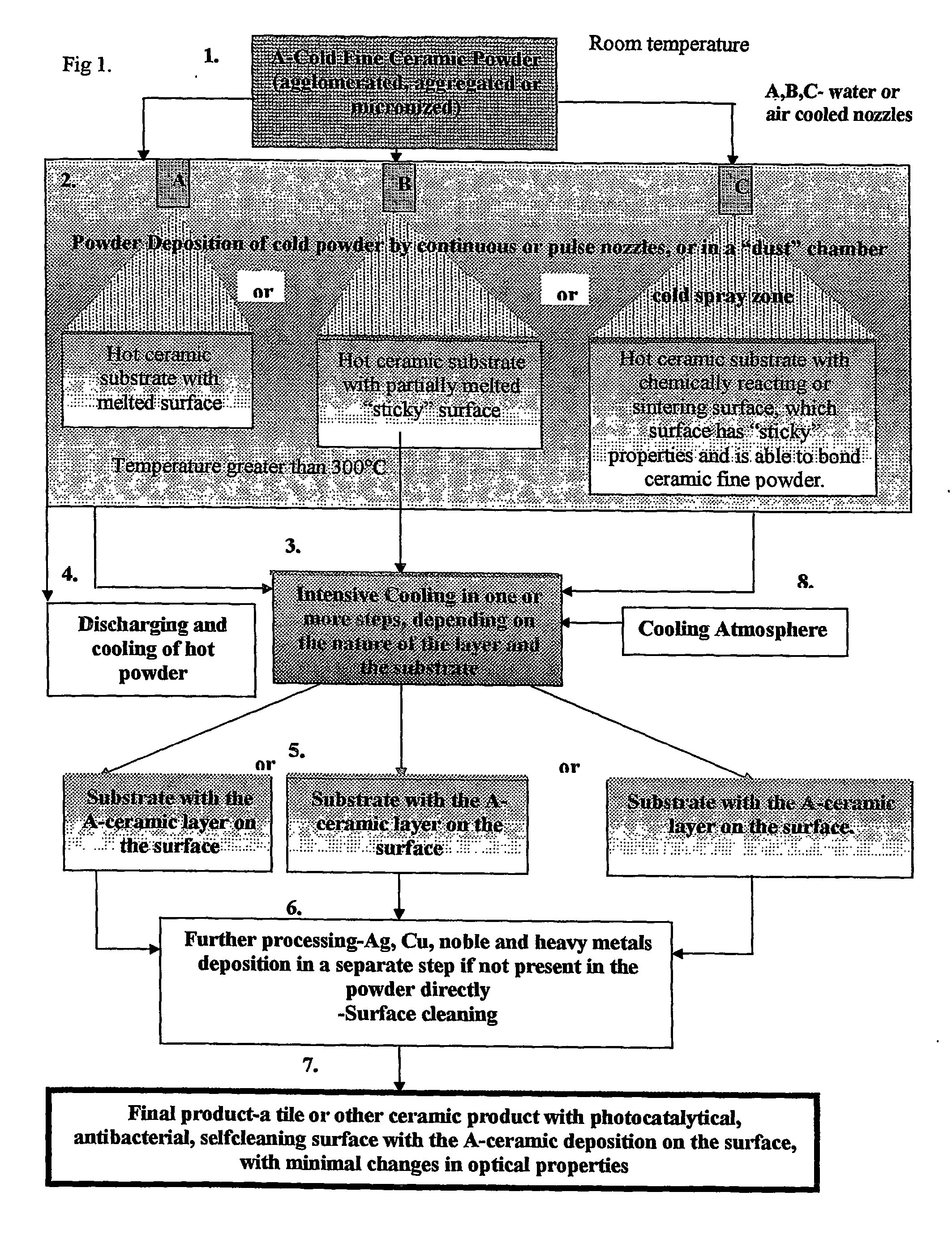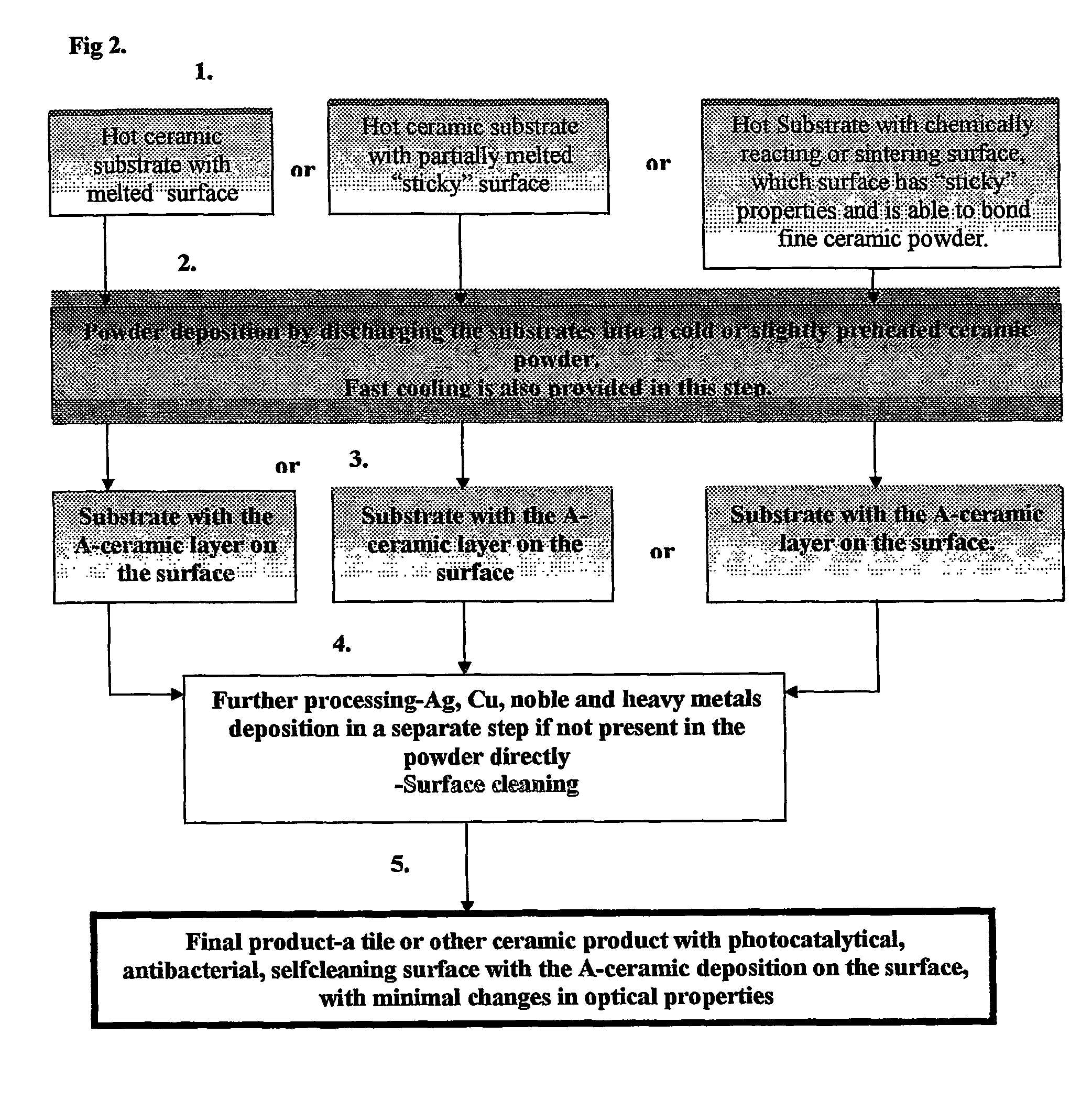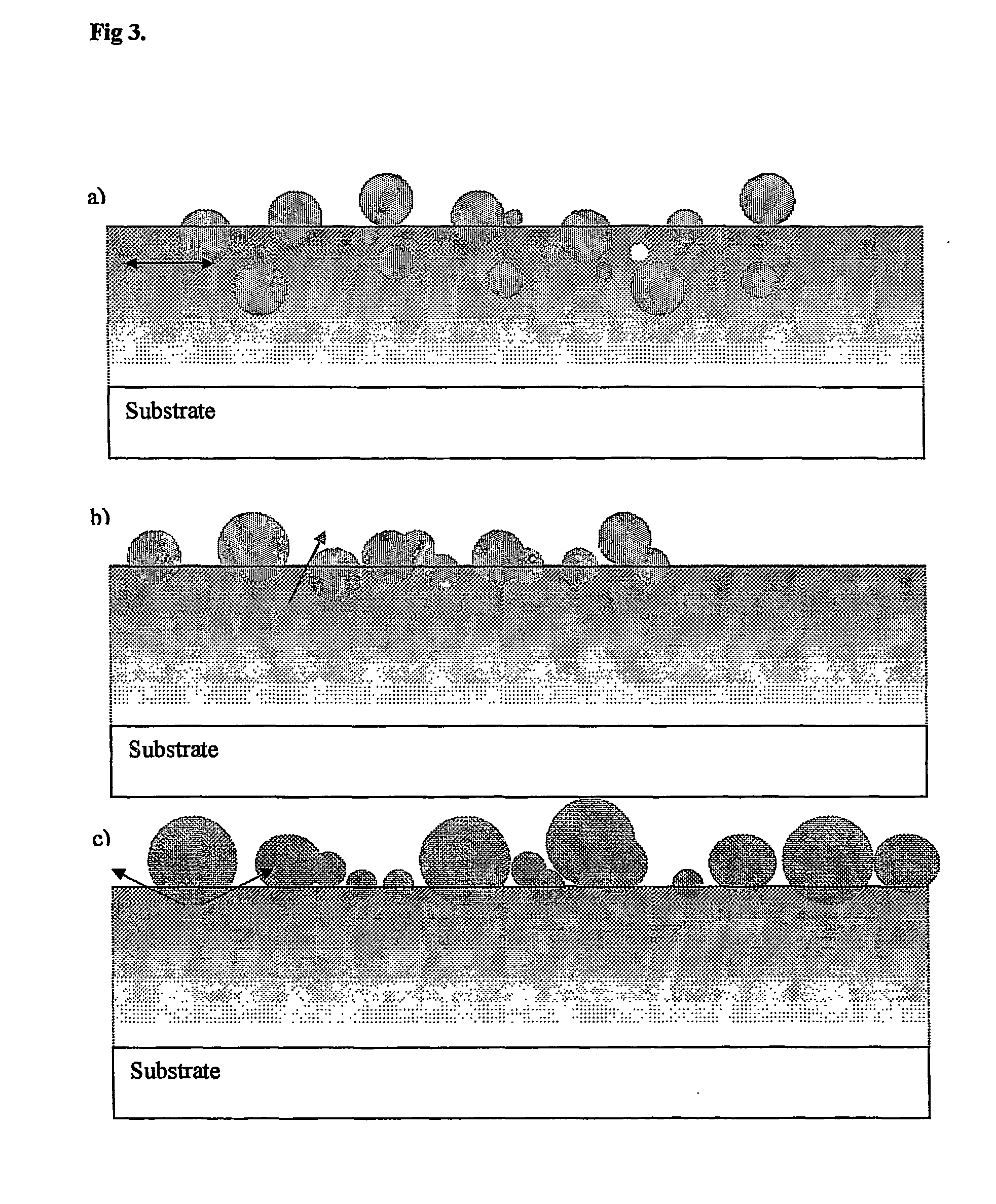Manufacturing of Photocatalytic, Antibacterial, Selfcleaning and Optically Non-Interfering Sufaces on Tiles and Glazed Ceramic Products
a technology of self-cleaning, antibacterial, optically non-interfering and photocatalytic surfaces, applied in the field of manufacturing of photocatalytic, antibacterial, self-cleaning and sanitizing surfaces, can solve the problems of major technical difficulties, environmental problems, and inability to meet the requirements of cleaning,
- Summary
- Abstract
- Description
- Claims
- Application Information
AI Technical Summary
Benefits of technology
Problems solved by technology
Method used
Image
Examples
example 2
[0039] A set of the same commercial tiles as in the EXAMPLE 1 was ramped to 1050° C. and then directly discharged into Ag-surface treated nano-anatase cold fine powder (FIG. 2). After washing and drying, high gloss surfaces were obtained (FIGS. 3 and 4). Separate set of clean tiles treated as in the Example 1 was used for AgNO3 surface post-treatment after anatase deposition. AgNO3 solution (0.03%) was sprayed on the warm anatase treated tile surface, and calcined at 500° C. after drying. Both experimental sets produced photocatalytic sanitizing surface.
example 3
[0040] Several tiles of a commercial product Hydrotect were heated to 1100° C. in a furnace. Then Ag surface treated nano anatase cold powder was deposited on the surface by a simple quartz nozzle air blow of the powder. The tiles on the surface were cooled during this deposition to about 800° C. and then removed from the furnace. Antibacterial, photocatalytic tile surface was obtained, while most of the original properties of this product were preserved. The product did not change its look and still remained hydrophilic.
example 4
[0041] An irregular shape piece of a porcelain ceramic plate was slowly heated in the furnace to the point, when the surface became “sticky”. It was not clear, if the surface layer melted, or partially melted, as the ramping to 1200° C. was taking place. Immediately after the temperature reached 1200° C., the furnace was opened and at temperature 1150° C. a cold nano anatase powder was puffed on the surface by two “cold” air nozzles and the porcelain surface quickly but gently cooled in blowing air. A high gloss, photocatalytic surface was obtained.
PUM
| Property | Measurement | Unit |
|---|---|---|
| Temperature | aaaaa | aaaaa |
| Fraction | aaaaa | aaaaa |
| Particle size | aaaaa | aaaaa |
Abstract
Description
Claims
Application Information
 Login to View More
Login to View More - R&D
- Intellectual Property
- Life Sciences
- Materials
- Tech Scout
- Unparalleled Data Quality
- Higher Quality Content
- 60% Fewer Hallucinations
Browse by: Latest US Patents, China's latest patents, Technical Efficacy Thesaurus, Application Domain, Technology Topic, Popular Technical Reports.
© 2025 PatSnap. All rights reserved.Legal|Privacy policy|Modern Slavery Act Transparency Statement|Sitemap|About US| Contact US: help@patsnap.com



